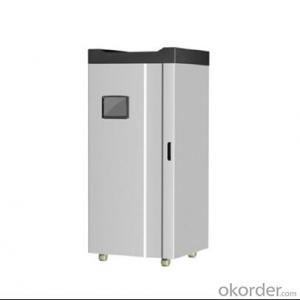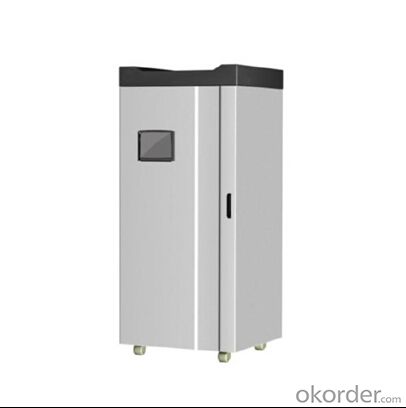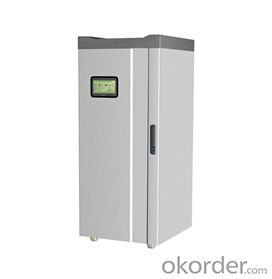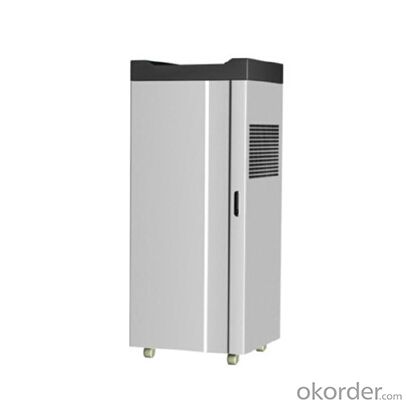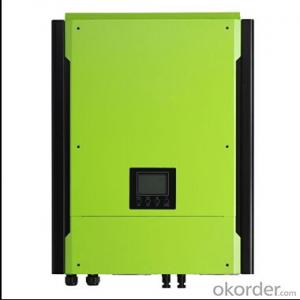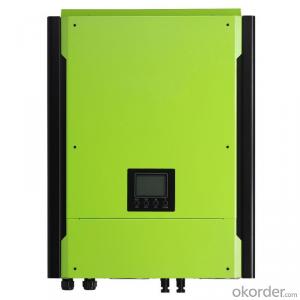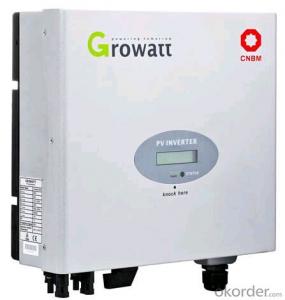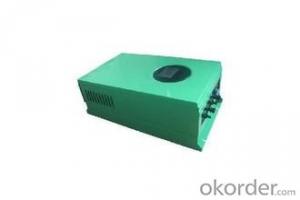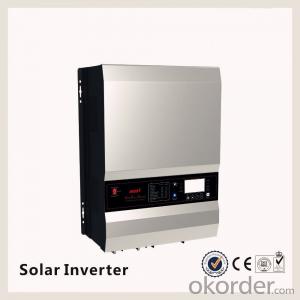Solar Inverter Japan - On-Grid Energy Storage PV Inverter PH500 Series 3-Phase 9kW
- Loading Port:
- China main port
- Payment Terms:
- TT or LC
- Min Order Qty:
- 90000 watt
- Supply Capability:
- 18000000 watt/month
OKorder Service Pledge
OKorder Financial Service
You Might Also Like
1. Structure of On-Grid Energy Storage PV Inverter Description
Three-phase AC-bus is a new energy power solution which can be used grid interactive and stand alone. An integrated ultra-fast AC transfer
switch guarantees that even sensitive back-up loads, like computers, never know when a utility outage occurs. The bi-directional inverter can
provide high quality true sine waveform power for the load. And the working mode of the Three-phase AC-bus can be selected and adjusted
to meet different requirements.
2. Main Features of the On-Grid Energy Storage PV Inverter
• Converters with Isolation design having safety and reliability;
• Protection functions of over-voltage, under-voltage, over-frequency, under-frequency, island effect protections, and pass the TUV;
• Fast off-on grid transition function to guarantee the stable operation of appliances;
• Multi-mode application of photovoltaic energy to bring out the intuitive economic benefits and long-time environmental effects;
• Fe-battery application with high capacity and high safety to provide longer time in cruising power
• Multiple working modes and working condition setups to meet individual demands of different customers
• On grid and off grid application available;
• Excellent power management function, providing unattended power supply solution;
• Easy installation and maintenance
• Functioning as UPS to guarantee uninterrupted power supply to the users;
• High security, stability and reliability
3. On-Grid Energy Storage PV Inverter Images
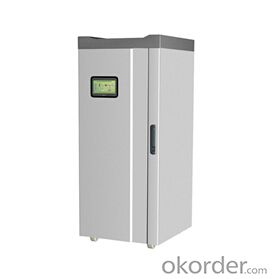
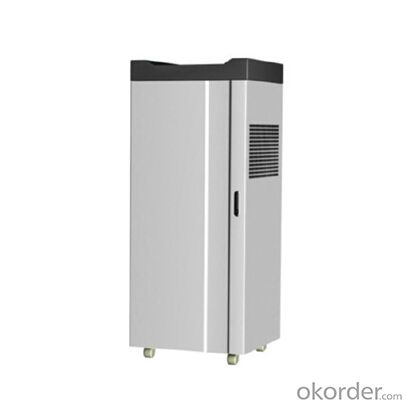
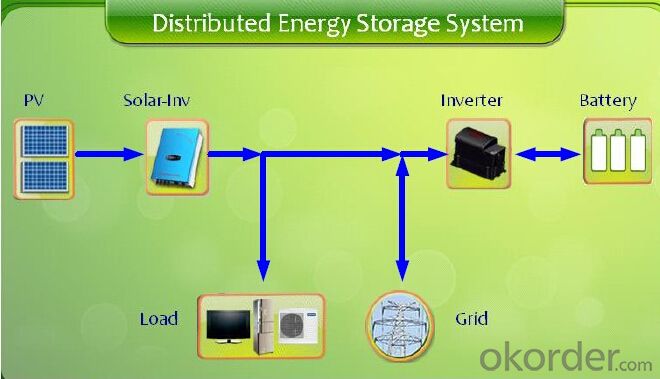
4. On-Grid Energy Storage PV Inverter Specification 窗体顶端 Product Name窗体底端 PH500 3-phase Continuous Power Rating 9KW AC SPECIFICATIONS Nominal AC Voltage 400Vac Nominal Frequency 50Hz Total Harmonic Distortion <4%< span=""> <2%< span=""> AC Transfer Switch Speed <20ms< span=""> Max• Inverter Efficiency 93% Reference Standards VDE-AR-4105 Output Waveform True Sine Wave DC SPECIFICATIONS Battery Voltage 52V 48~57VDC SYSTEM SPECIFICATIONS Usable Capacity ≥8KWh Exterior Communications Ethernet Operating Temperature 0oC~45oC Operating Humidity Range 10%~90% Altitude <2000m< span=""> Protection Grade IP20 Dimension (L x W x H) 750mm×609mm×1270mm Weight 305KG Enclosure Rating Indoor 窗体底端 5. FAQ of On-Grid Energy Storage PV Inverter Q1. What is the difference between inverter and On-Grid Energy Storage PV Inverter? Q2. What is the difference between MPPT&PWM? Q3. What is the waranty of product?
A1. Inverter only has AC inpput, but On-Grid Energy Storage PV Inverter both connect to AC input and solar panel, it saves more power.
A2. MPPT has higher efficiency, it can track the max power point and won't waste energy.
A3. 12 months.
- Q: How does a solar inverter communicate with other components of a solar power system?
- A solar inverter communicates with other components of a solar power system through wired or wireless connections. It typically uses communication protocols such as Modbus, CAN bus, or Ethernet to exchange data with devices such as solar panels, batteries, energy meters, and monitoring systems. This communication enables the inverter to receive information about the solar panel's output, battery status, and energy consumption, allowing it to optimize power generation and manage energy flow within the system.
- Q: Can a solar inverter be used with concentrated solar power systems?
- Yes, a solar inverter can be used with concentrated solar power systems. Concentrated solar power (CSP) systems use mirrors or lenses to concentrate sunlight onto a receiver, which then converts the sunlight into heat. This heat can then be used to generate electricity through various means, including steam turbines. In order to convert this heat-generated electricity into the required alternating current (AC) for use in homes and businesses, a solar inverter is needed. Therefore, a solar inverter is an essential component in connecting and integrating the electricity generated by concentrated solar power systems into the power grid.
- Q: Can a solar inverter be used in areas with high levels of electrical noise or interference?
- Yes, a solar inverter can be used in areas with high levels of electrical noise or interference. However, it is important to ensure that the solar inverter is designed and equipped to handle such conditions. Some modern solar inverters have built-in features and technologies that help mitigate electrical noise and interference. These features may include advanced filtering, shielding, and surge protection mechanisms. Additionally, proper grounding and installation practices can also help reduce the impact of electrical noise and interference on the performance of the solar inverter. It is advisable to consult with a professional or the manufacturer of the solar inverter to ensure compatibility and optimal performance in high-noise environments.
- Q: Can a solar inverter be used with different types of grounding systems?
- Yes, a solar inverter can be used with different types of grounding systems. Solar inverters are designed to be flexible and adaptable to various electrical systems and grounding configurations. They can be used with grounded, ungrounded, or impedance grounded systems, allowing for compatibility across different types of grounding systems.
- Q: Can a solar inverter be used in regions with high levels of air pollution?
- Yes, a solar inverter can be used in regions with high levels of air pollution. The performance of the solar inverter may be slightly affected due to the reduced sunlight reaching the solar panels, but it can still convert the available solar energy into usable electricity. Regular maintenance and cleaning of the solar panels may be required to mitigate the impact of air pollution on their efficiency.
- Q: Do I need a special inverter for a battery storage system?
- Yes, a special inverter is needed for a battery storage system. Unlike a regular inverter that converts DC power from solar panels into AC power for immediate use, a battery storage system requires an inverter that can not only convert DC power to AC power but also manage the charging and discharging of the batteries efficiently. This special inverter is designed to work seamlessly with the battery storage system, ensuring optimal performance and maximizing the utilization of stored energy.
- Q: What maintenance is required for a solar inverter?
- Regular maintenance for a solar inverter typically includes visual inspections, cleaning, and ensuring proper ventilation. It is also important to monitor and clean the solar panels to prevent any shading or debris that could affect the overall performance of the inverter. Additionally, checking and tightening all electrical connections, as well as updating the firmware and software, may be necessary to ensure optimal functionality.
- Q: How does a microinverter differ from a string inverter?
- A microinverter differs from a string inverter in that it is a small, individual inverter attached to each solar panel, converting the DC power generated by the panel into AC power. On the other hand, a string inverter is a larger central inverter that is connected to multiple solar panels in a string, converting the combined DC power into AC power. The main advantage of a microinverter is that it allows for maximum power point tracking and independent operation of each panel, increasing the overall efficiency and output of the solar system. Additionally, microinverters provide monitoring capabilities at the panel level, making it easier to identify and address any issues or malfunctions.
- Q: Can a solar inverter be used with a solar-powered heating system?
- Yes, a solar inverter can be used with a solar-powered heating system. The solar inverter is responsible for converting the direct current (DC) generated by the solar panels into alternating current (AC) that can be used to power various appliances, including a heating system. By connecting the solar inverter to the solar panels and then to the heating system, the electricity produced by the solar panels can be utilized to power the heating system, making it more energy-efficient and cost-effective.
- Q: Can a solar inverter be used in areas with unstable grid power?
- Yes, a solar inverter can be used in areas with unstable grid power. In fact, solar inverters are often used in such areas to provide a stable and reliable power supply. The inverter's ability to convert solar energy into usable electricity allows it to function independently of the grid power, ensuring a continuous power supply even during grid outages or fluctuations.
Send your message to us
Solar Inverter Japan - On-Grid Energy Storage PV Inverter PH500 Series 3-Phase 9kW
- Loading Port:
- China main port
- Payment Terms:
- TT or LC
- Min Order Qty:
- 90000 watt
- Supply Capability:
- 18000000 watt/month
OKorder Service Pledge
OKorder Financial Service
Similar products
Hot products
Hot Searches
Related keywords
